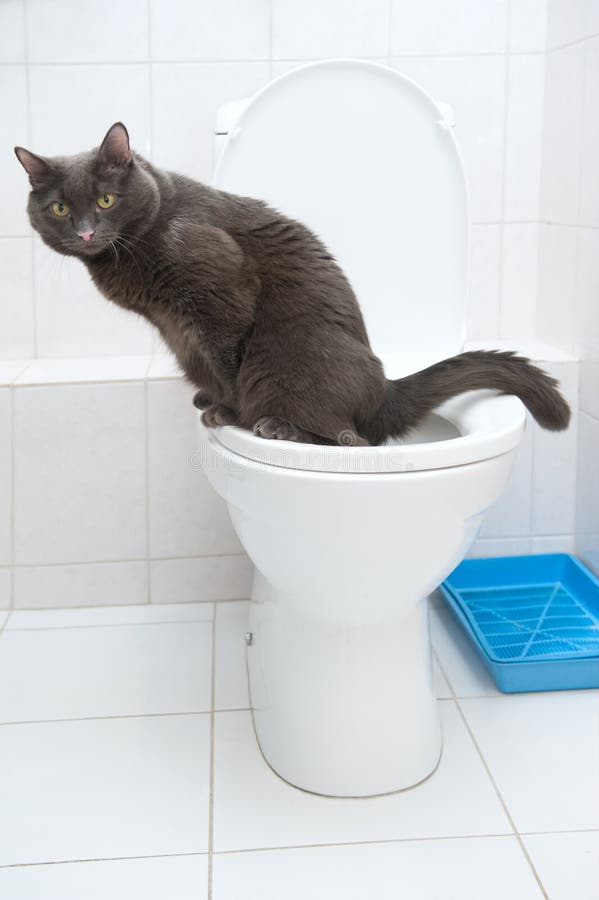Never Flush Cat Poop Down Your Toilet - Protect Your Pipes Infrastructure
Never Flush Cat Poop Down Your Toilet - Protect Your Pipes Infrastructure
Blog Article
What are your concepts about Don’t flush cat feces down the toilet?

Introduction
As feline owners, it's essential to bear in mind how we deal with our feline friends' waste. While it may appear hassle-free to flush cat poop down the commode, this method can have detrimental repercussions for both the setting and human health and wellness.
Ecological Impact
Flushing pet cat poop introduces unsafe microorganisms and parasites into the water supply, posturing a significant threat to aquatic ecosystems. These contaminants can negatively influence aquatic life and concession water quality.
Wellness Risks
In addition to ecological concerns, purging feline waste can also pose health risks to human beings. Pet cat feces might include Toxoplasma gondii, a bloodsucker that can trigger toxoplasmosis-- a possibly serious ailment, especially for pregnant females and people with damaged body immune systems.
Alternatives to Flushing
Thankfully, there are more secure and much more responsible ways to take care of cat poop. Think about the following choices:
1. Scoop and Dispose in Trash
The most common technique of disposing of cat poop is to scoop it into an eco-friendly bag and throw it in the trash. Make certain to use a devoted clutter inside story and deal with the waste immediately.
2. Usage Biodegradable Litter
Opt for biodegradable cat trash made from materials such as corn or wheat. These trashes are environmentally friendly and can be safely dealt with in the trash.
3. Bury in the Yard
If you have a lawn, take into consideration hiding pet cat waste in a marked location away from vegetable gardens and water sources. Be sure to dig deep sufficient to avoid contamination of groundwater.
4. Install a Pet Waste Disposal System
Invest in an animal waste disposal system specifically designed for feline waste. These systems make use of enzymes to break down the waste, lowering odor and environmental influence.
Final thought
Accountable pet dog possession extends beyond offering food and shelter-- it likewise includes appropriate waste monitoring. By avoiding purging pet cat poop down the commode and opting for alternative disposal methods, we can reduce our environmental footprint and safeguard human health and wellness.
Why Can’t I Flush Cat Poop?
It Spreads a Parasite
Cats are frequently infected with a parasite called toxoplasma gondii. The parasite causes an infection called toxoplasmosis. It is usually harmless to cats. The parasite only uses cat poop as a host for its eggs. Otherwise, the cat’s immune system usually keeps the infection at low enough levels to maintain its own health. But it does not stop the develop of eggs. These eggs are tiny and surprisingly tough. They may survive for a year before they begin to grow. But that’s the problem.
Our wastewater system is not designed to deal with toxoplasmosis eggs. Instead, most eggs will flush from your toilet into sewers and wastewater management plants. After the sewage is treated for many other harmful things in it, it is typically released into local rivers, lakes, or oceans. Here, the toxoplasmosis eggs can find new hosts, including starfish, crabs, otters, and many other wildlife. For many, this is a significant risk to their health. Toxoplasmosis can also end up infecting water sources that are important for agriculture, which means our deer, pigs, and sheep can get infected too.
Is There Risk to Humans?
There can be a risk to human life from flushing cat poop down the toilet. If you do so, the parasites from your cat’s poop can end up in shellfish, game animals, or livestock. If this meat is then served raw or undercooked, the people who eat it can get sick.
In fact, according to the CDC, 40 million people in the United States are infected with toxoplasma gondii. They get it from exposure to infected seafood, or from some kind of cat poop contamination, like drinking from a stream that is contaminated or touching anything that has come into contact with cat poop. That includes just cleaning a cat litter box.
Most people who get infected with these parasites will not develop any symptoms. However, for pregnant women or for those with compromised immune systems, the parasite can cause severe health problems.
How to Handle Cat Poop
The best way to handle cat poop is actually to clean the box more often. The eggs that the parasite sheds will not become active until one to five days after the cat poops. That means that if you clean daily, you’re much less likely to come into direct contact with infectious eggs.
That said, always dispose of cat poop in the garbage and not down the toilet. Wash your hands before and after you clean the litter box, and bring the bag of poop right outside to your garbage bins.
https://trenchlesssolutionsusa.com/why-cant-i-flush-cat-poop/

We hope you liked our article about Don’t flush cat feces down the toilet. Thanks a ton for finding the time to read through our piece of content. Enjoyed our write-up? Please share it. Let someone else check it out. Thanks for your time. Don't forget to come by our blog back soon.
Book Service Report this page